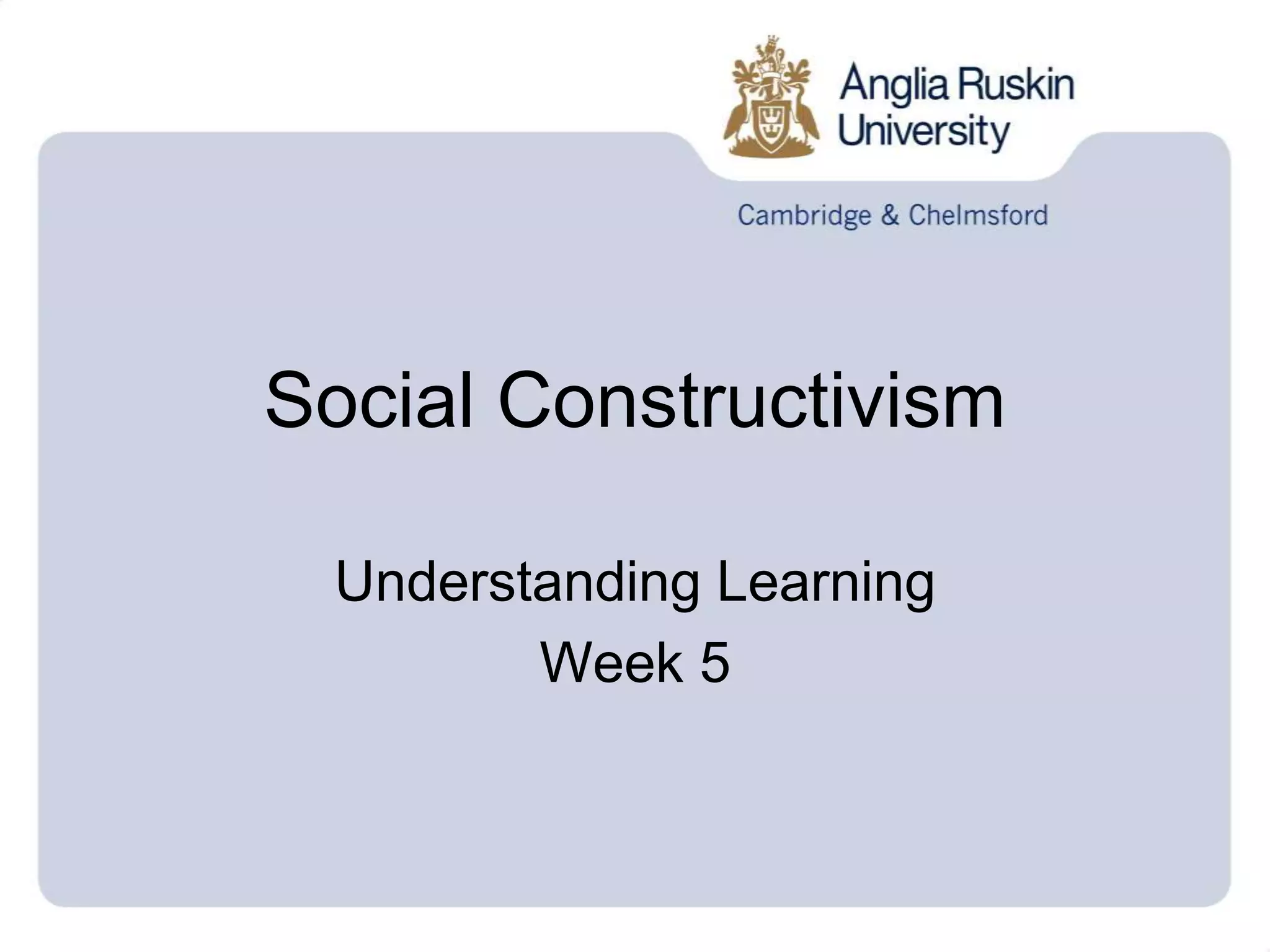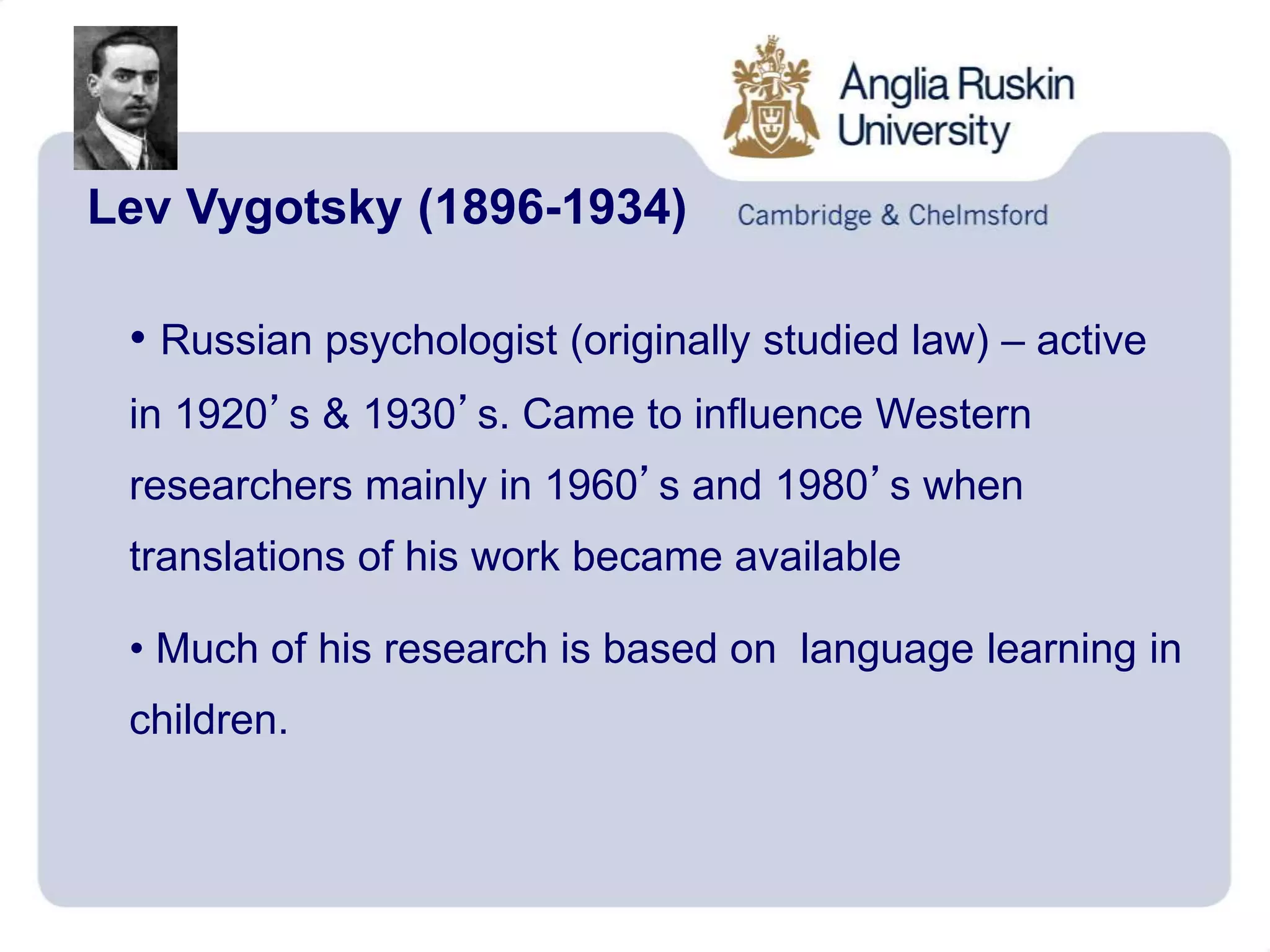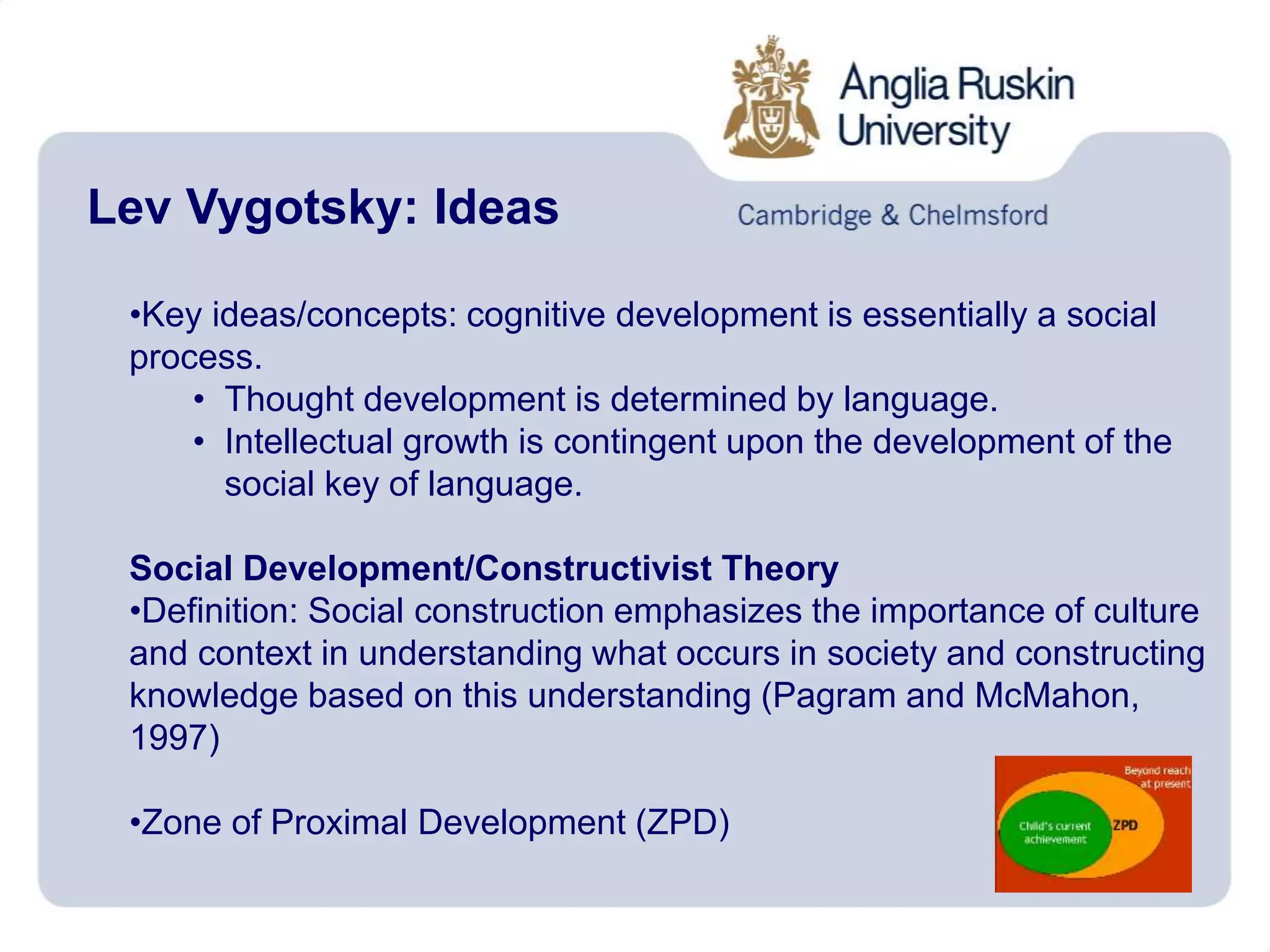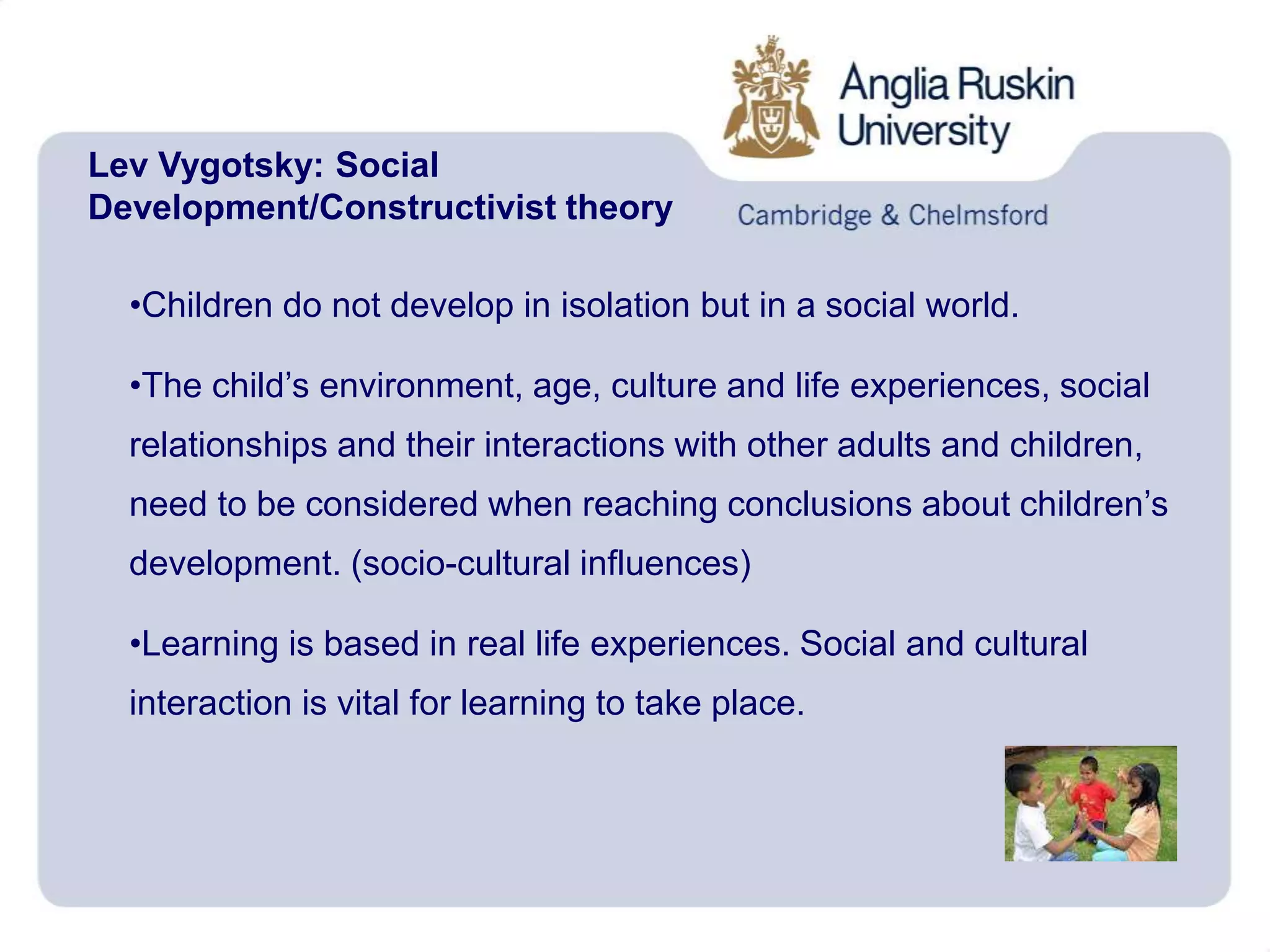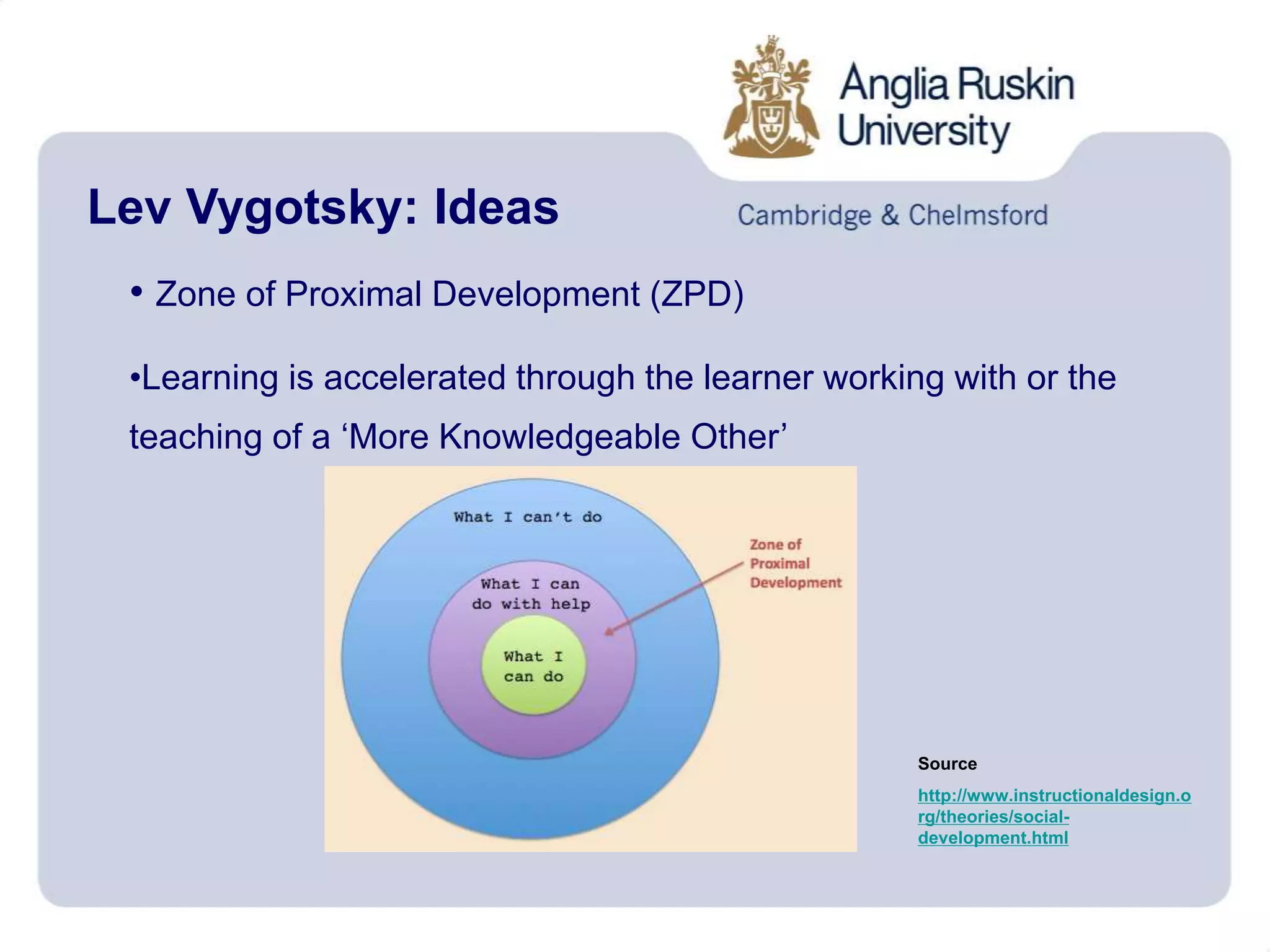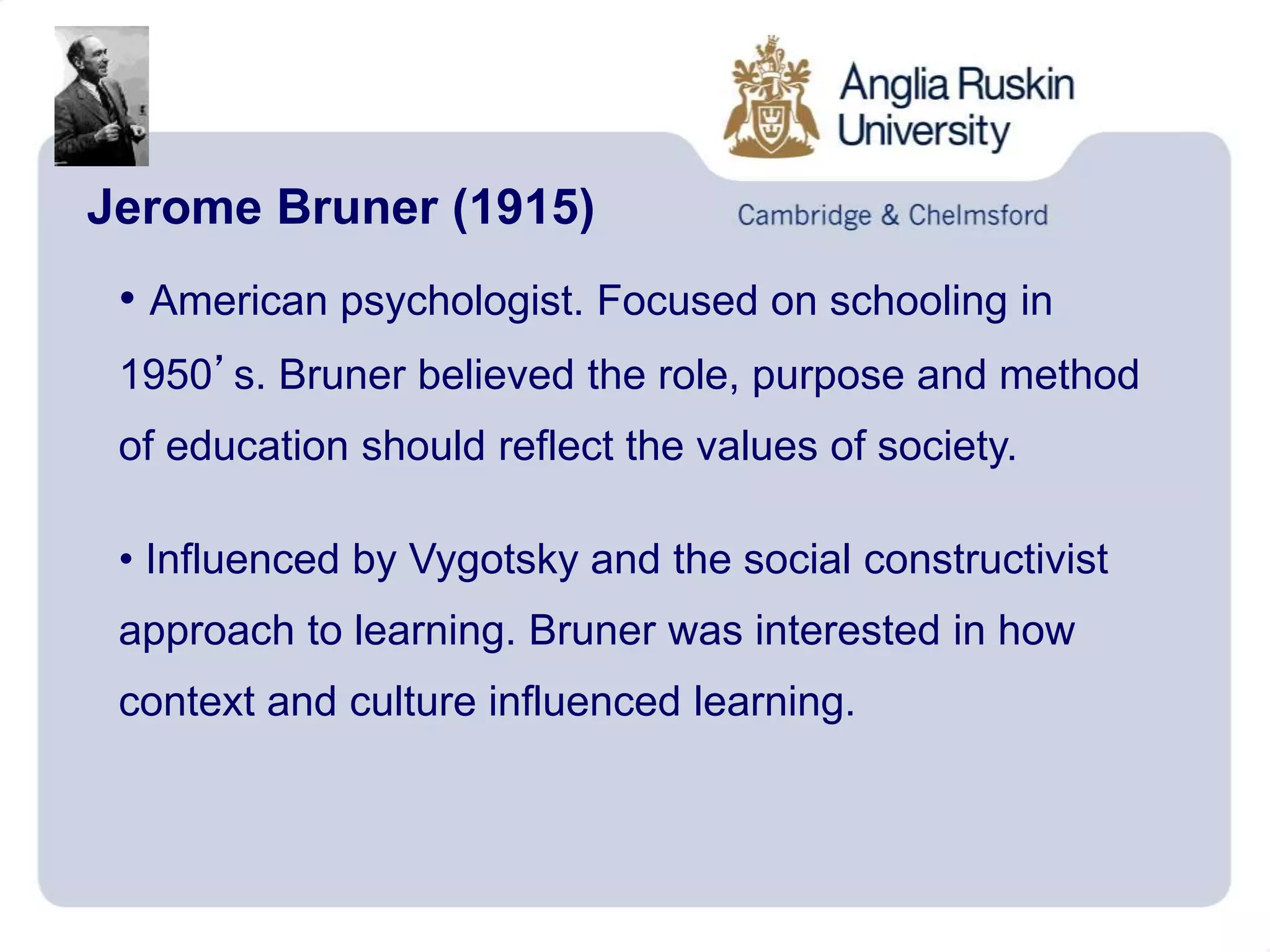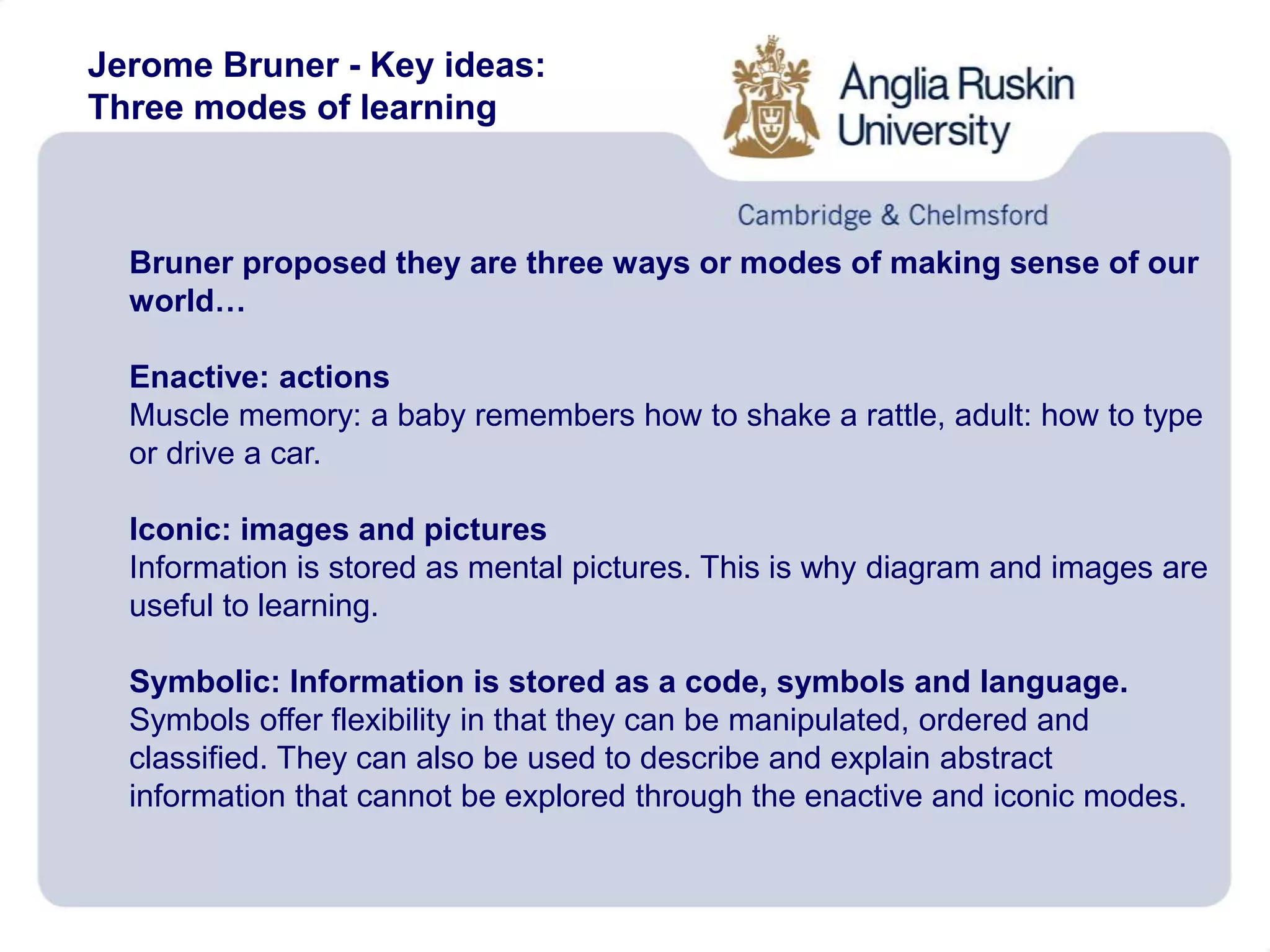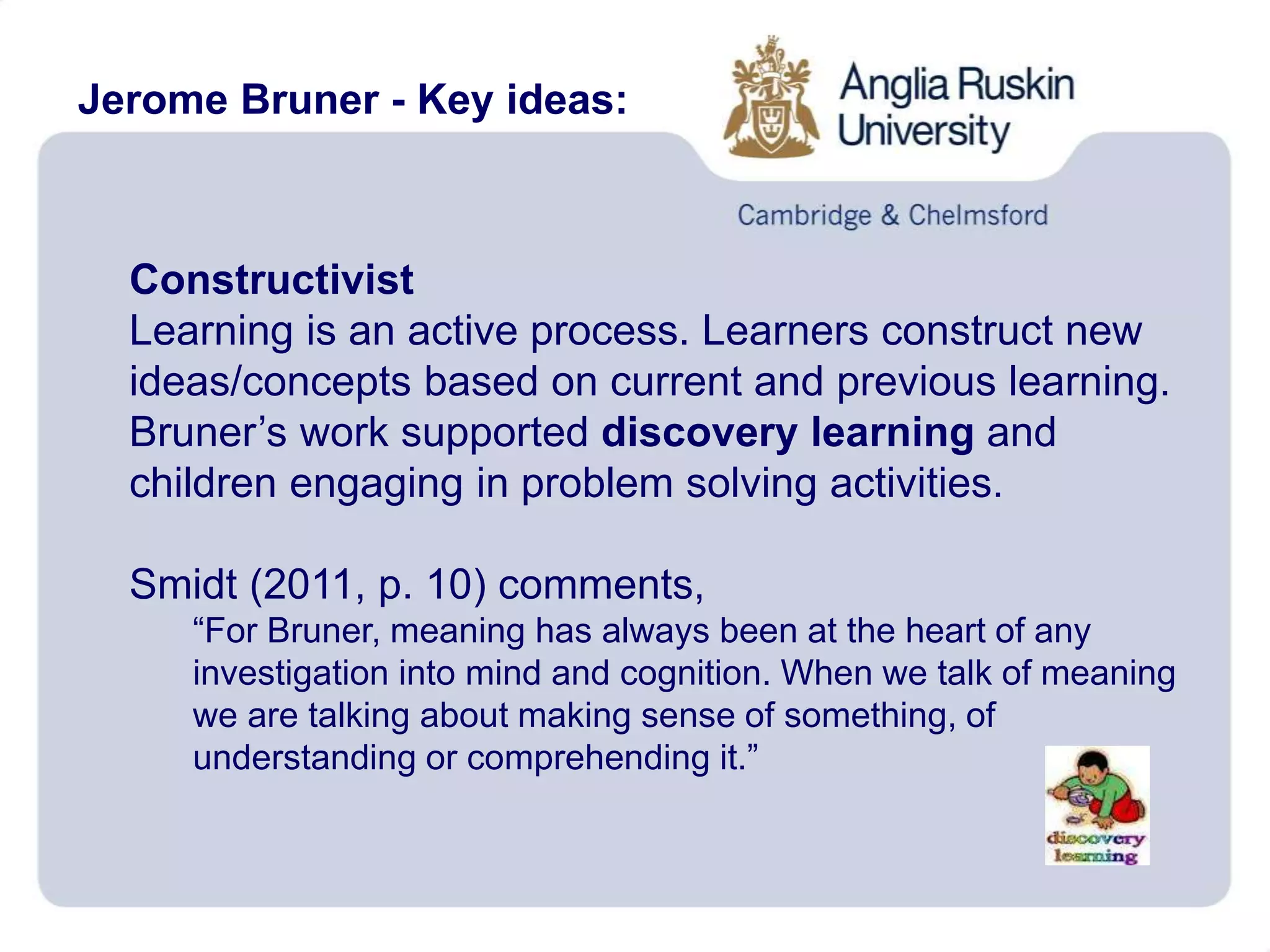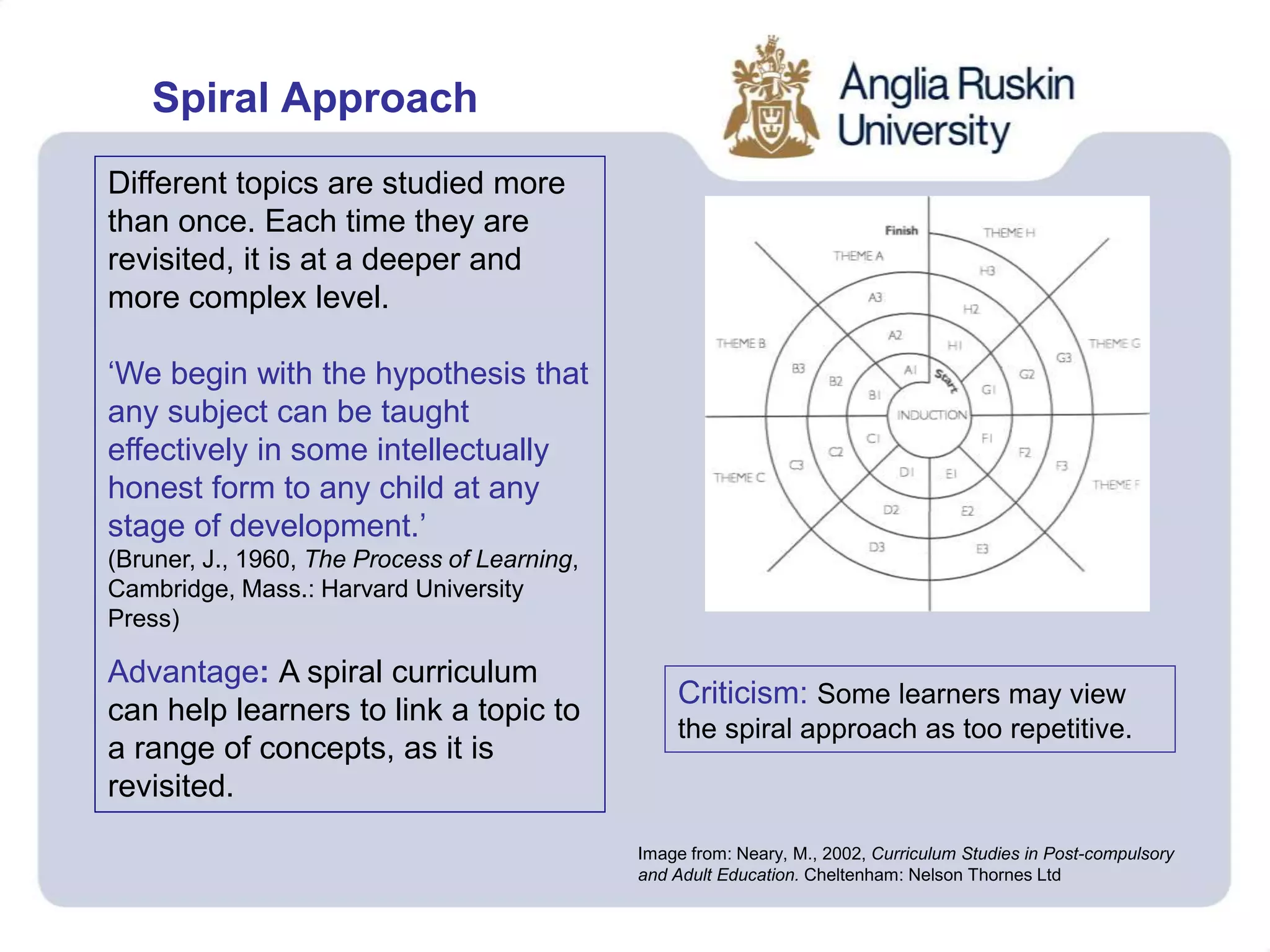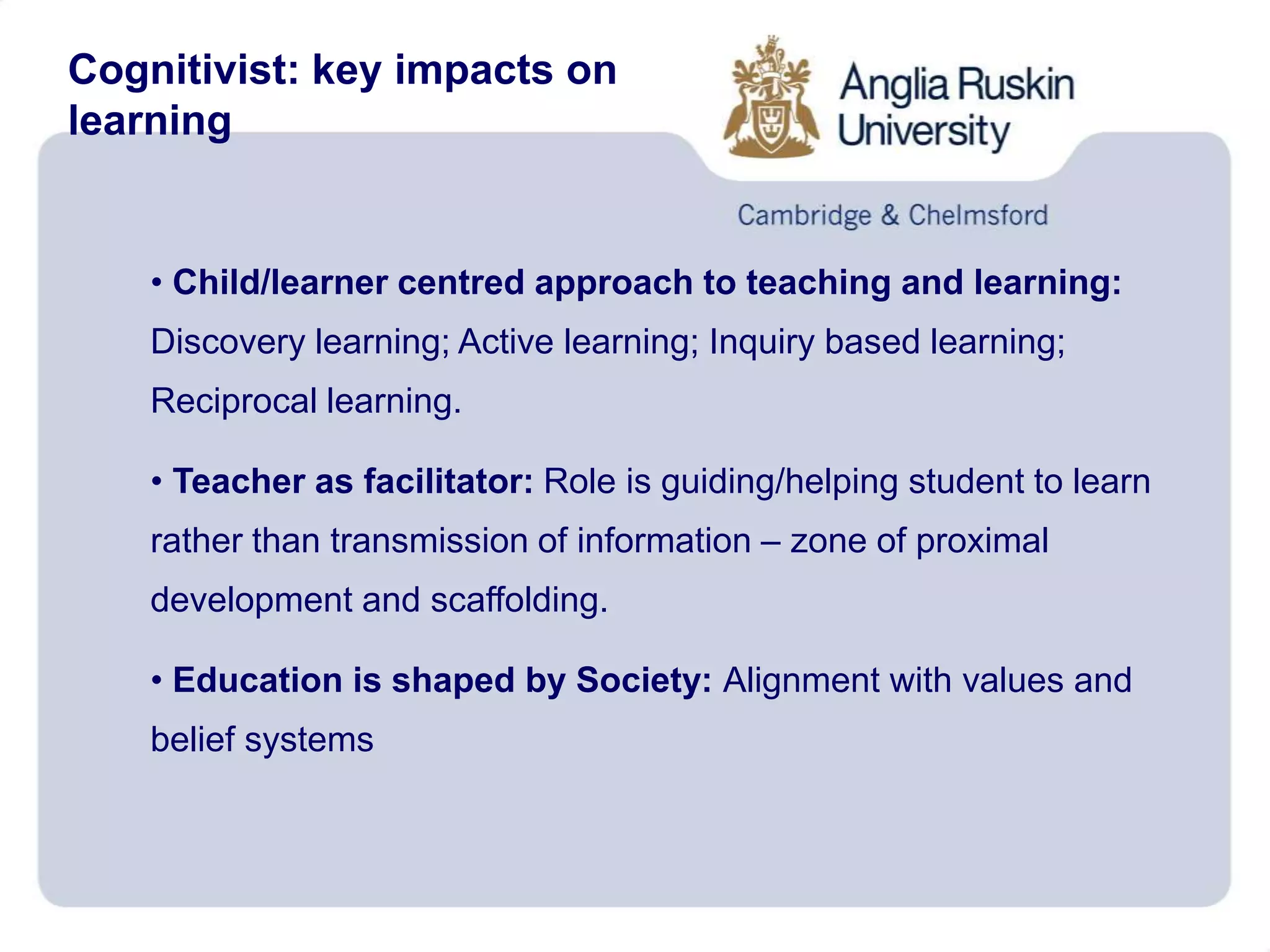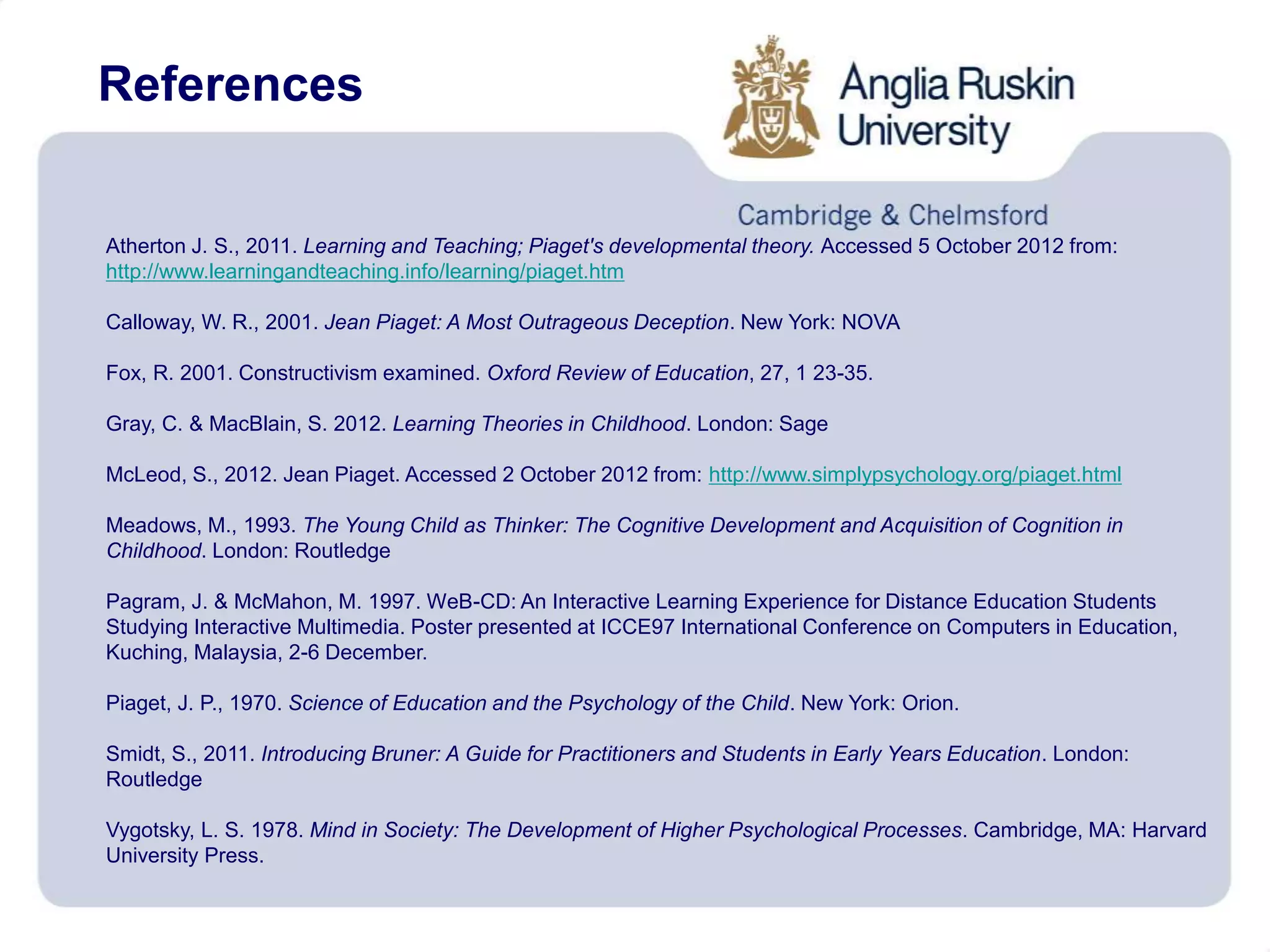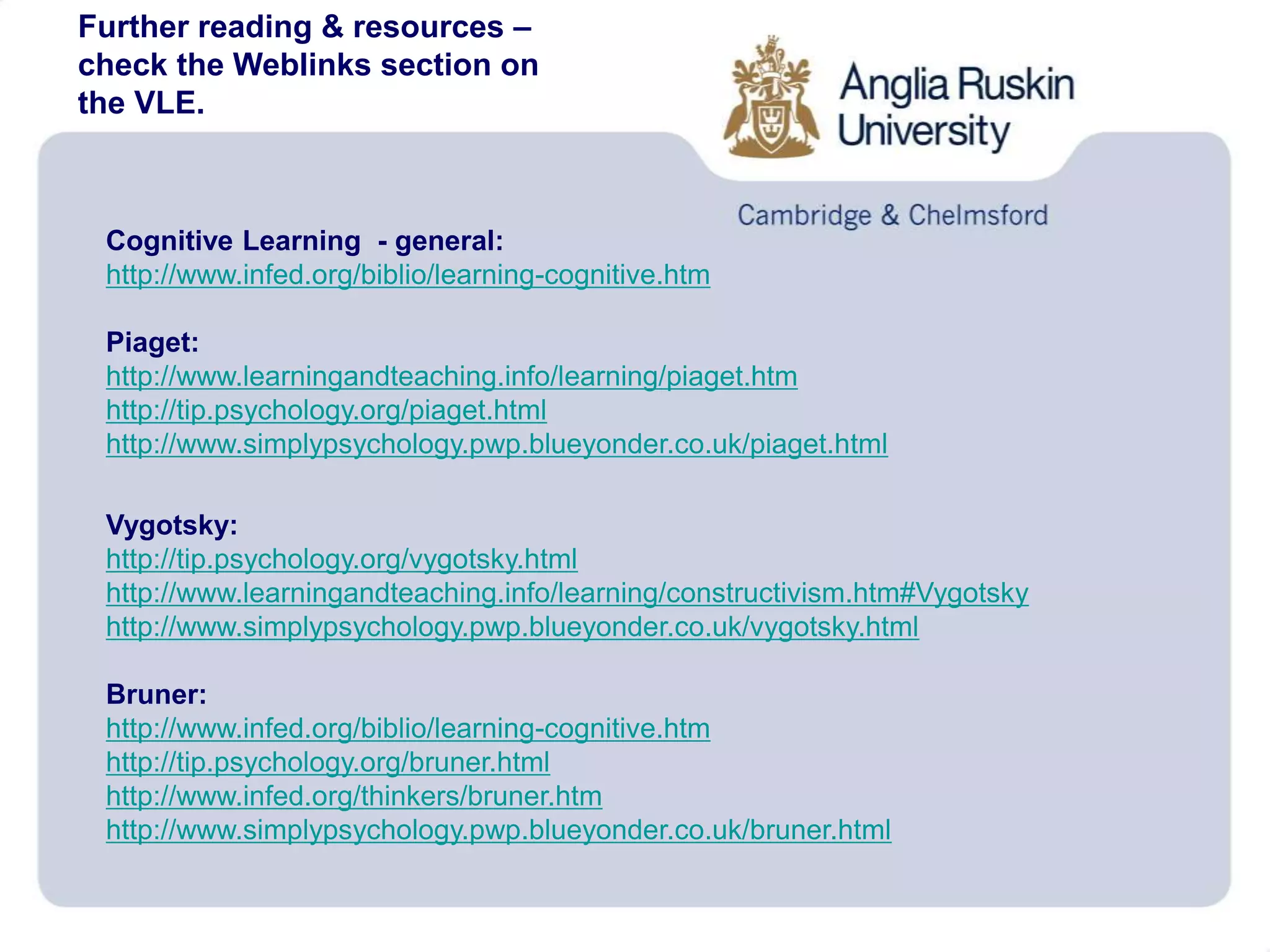Lev Vygotsky was a Russian psychologist who developed the theory of social constructivism. He believed that cognitive development occurs through social and cultural interactions. Key concepts in his theory include: language determines thought; learning is accelerated through collaboration with more knowledgeable others; and the zone of proximal development. Jerome Bruner built upon Vygotsky's ideas and emphasized the social and cultural aspects of learning. He proposed three modes of learning - enactive, iconic, and symbolic. Bruner also developed the concept of a spiral curriculum where topics are revisited at increasing levels of complexity. Both Vygotsky and Bruner viewed the teacher's role as a facilitator who scaffolds learning experiences.
